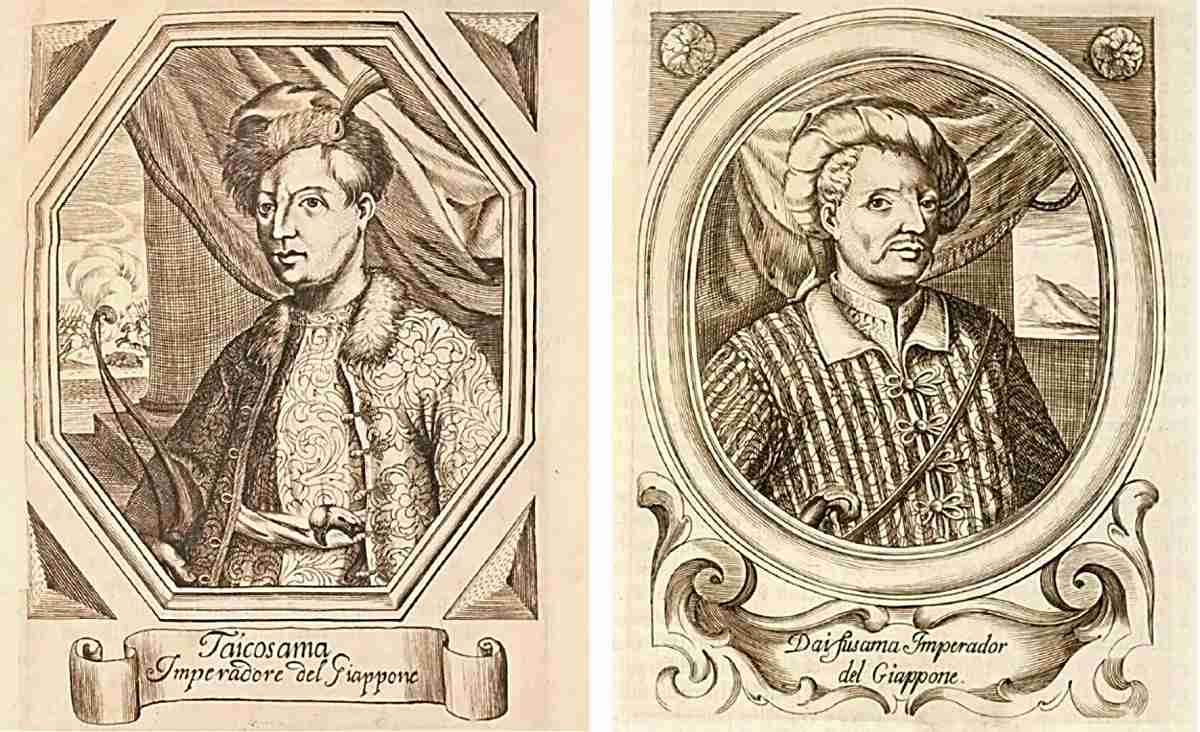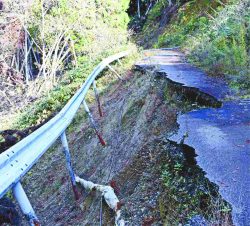
Illustrations from an Italian book published in 1683 show depictions of Toyotomi Hideyoshi, left, and Tokugawa Ieyasu.
13:50 JST, February 27, 2021
An Italian book written in the latter half of the 17th century was recently confirmed to contain portraits of noted Japanese warlords Toyotomi Hideyoshi and Tokugawa Ieyasu along with descriptions of their characters and achievements.
It was rare for a Japanese person to be featured with portrait depictions in biographies that were popular in Europe during the period. The book is a noteworthy historical source that shows how the two rulers were described overseas during Japan’s period of national isolation enacted by the Tokugawa shogunate.
Written by Naples lawyer Lorenzo Crasso and published in 1683, “Elogi di Capitani Illustri (Praises of illustrious captains)” is a compilation of stories about the lives of approximately 100 military commanders from across the world.
The book features illustrations of Hideyoshi and Ieyasu, who are depicted in Western attire, such as capes and hats.
There are records showing that missionaries who visited Japan during the warring states period in the 15th to 16th centuries depicted Japanese people as Caucasian, according to Prof. Frederik Cryns of the International Research Center for Japanese Studies in Kyoto.
Hitoshi Ogawa, a research fellow at the center who translated the book, said the descriptions of the two warlords possibly were based on letters written by Jesuits who visited Japan before the beginning of Japan’s isolation, which started in the early 17th century.
Hideyoshi is described as “small but sturdy, and rough in temper.” With the political purge of his nephew Hidetsugu and the persecution of Christians, Hideyoshi “grew increasingly brutal and ambitious with each passing year,” the book states.
He is also referred to as the “Tiberius of Japan,” a reference to the ancient Roman emperor who presided over a reign of terror while displaying deft political prowess.
Ieyasu is described as a man of “stout medium height with gloomy eyes.” Unlike Hideyoshi, who hailed from a low social class and oppressed powerful people, Ieyasu “was of noble blood and safeguarded them with great care” when seizing power after Hideyoshi’s death, according to the book.
Regarding Ieyasu’s crackdown on Christians, the book notes that he “had virtues, but his wickedness, greed, pompousness, vigilance and cunning exceeded them.”
There are many records of Japan produced by missionaries before the period of national isolation, and in the 18th century, during the so-called enlightenment period, it was popular to make comparisons between Western Europe and Japan.
However, Cryns said there are few historical materials that show how Western intellectuals perceived Japan in the latter half of the 17th century, and the discoveries in the book help to fill the void.
Ogawa plans to write a thesis that includes a complete translation of the descriptions concerning Hideyoshi and Ieyasu.
"Society" POPULAR ARTICLE
-

M4.9 Earthquake Hits Tokyo, Neighboring Prefectures
-

Israeli Tourists Refused Accommodation at Hotel in Japan’s Nagano Pref., Prompting Protest by Israeli Embassy and Probe by Prefecture
-

M7.5 Earthquake Hits Northern Japan; Tsunami Waves Observed in Hokkaido, Aomori and Iwate Prefectures
-

Tsukiji Market Urges Tourists to Avoid Visiting in Year-End
-

M5.7 Earthquake Hits Japan’s Kumamoto Pref., Measuring Upper 5 Intensity, No Tsunami Expected
JN ACCESS RANKING
-

Keidanren Chairman Yoshinobu Tsutsui Visits Kashiwazaki-Kariwa Nuclear Power Plant; Inspects New Emergency Safety System
-

Imports of Rare Earths from China Facing Delays, May Be Caused by Deterioration of Japan-China Relations
-

Tokyo Economic Security Forum to Hold Inaugural Meeting Amid Tense Global Environment
-

University of Tokyo Professor Discusses Japanese Economic Security in Interview Ahead of Forum
-

Japan Pulls out of Vietnam Nuclear Project, Complicating Hanoi’s Power Plans
























